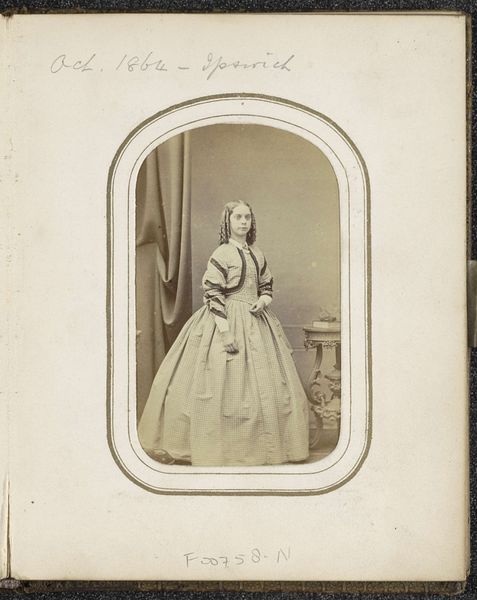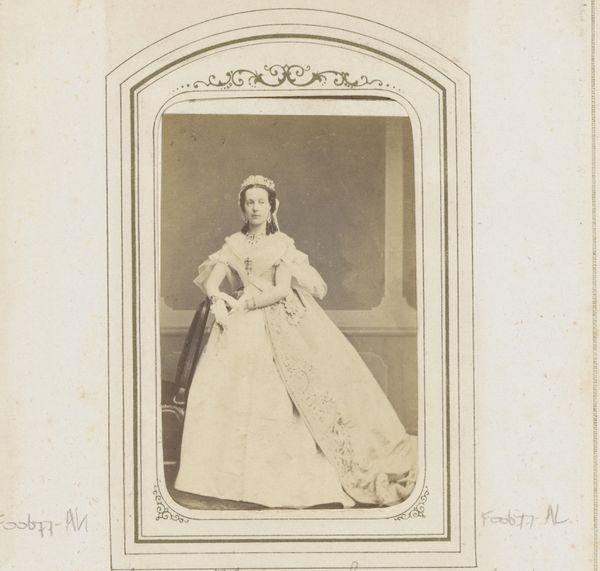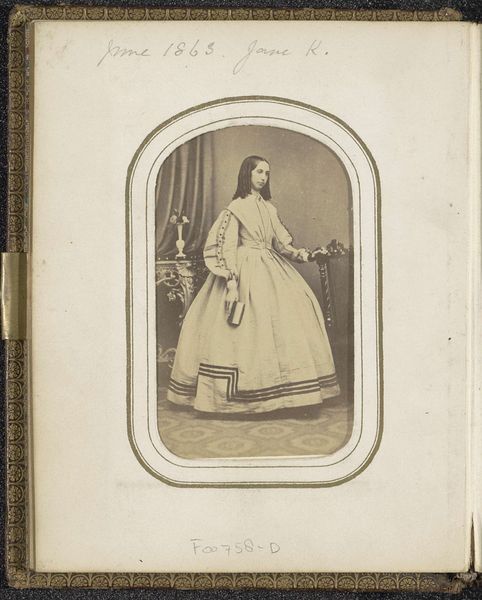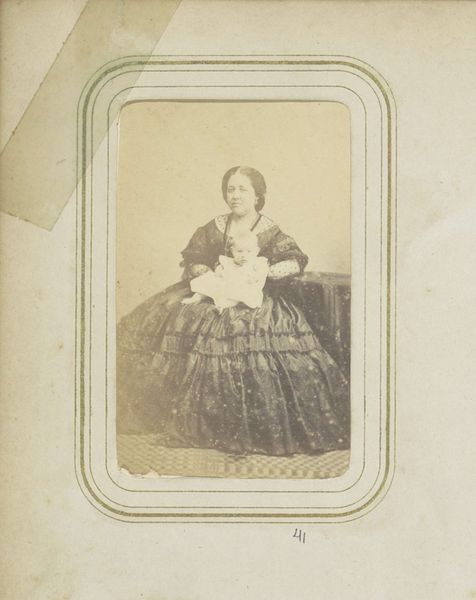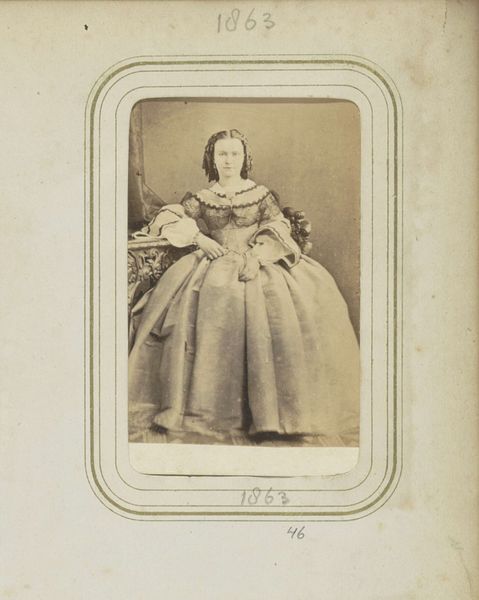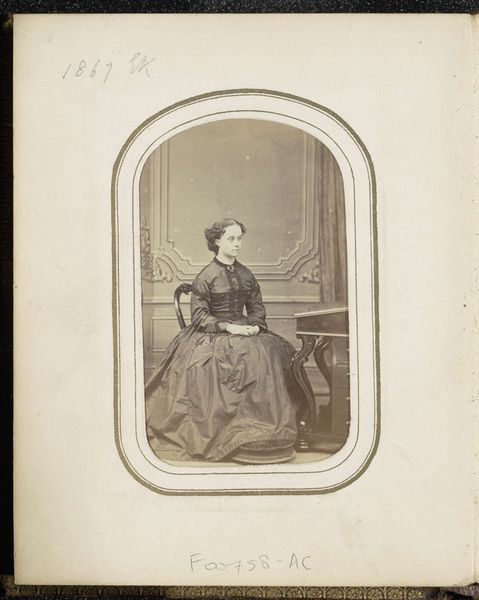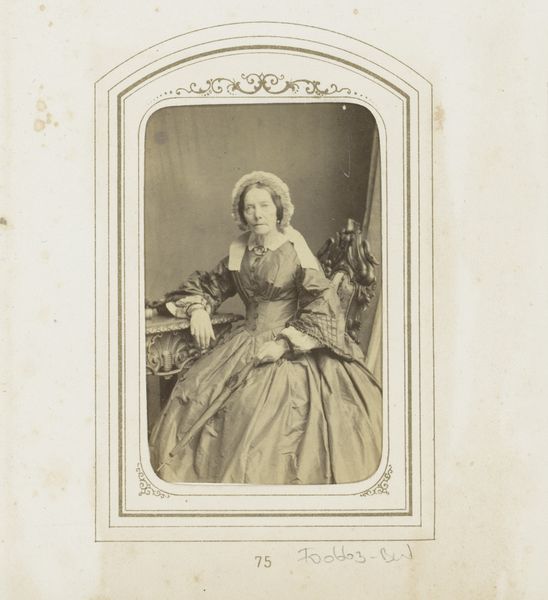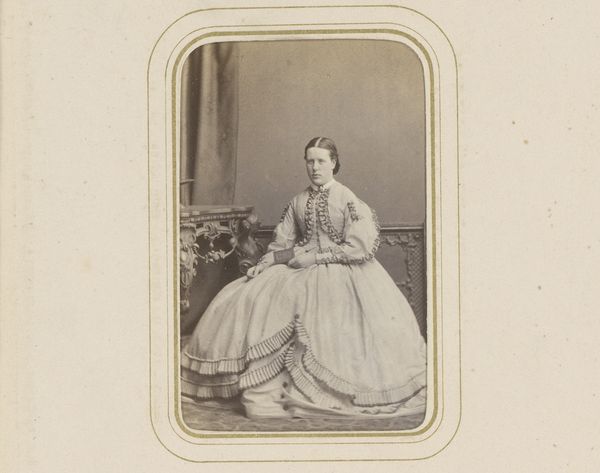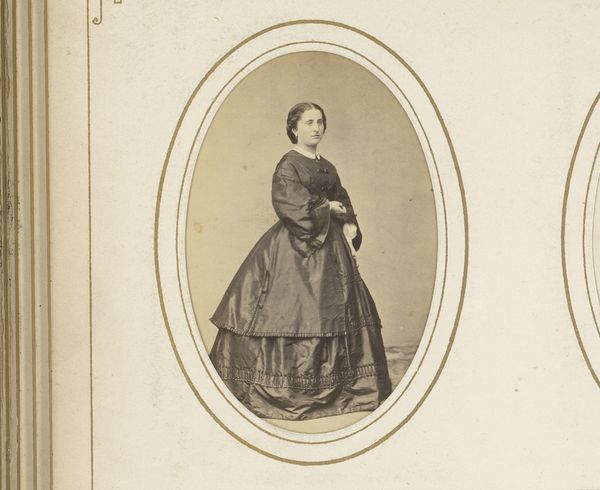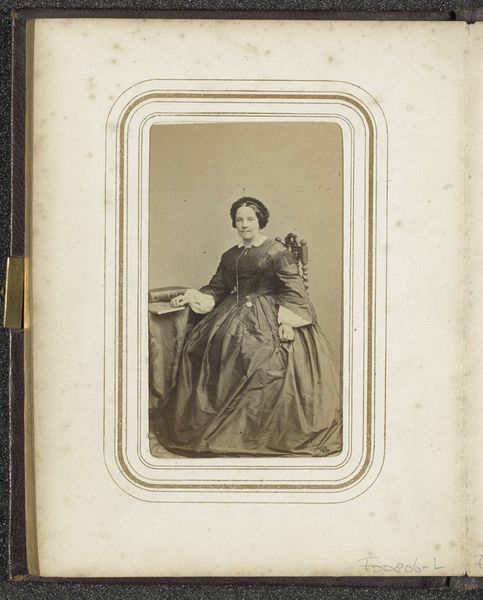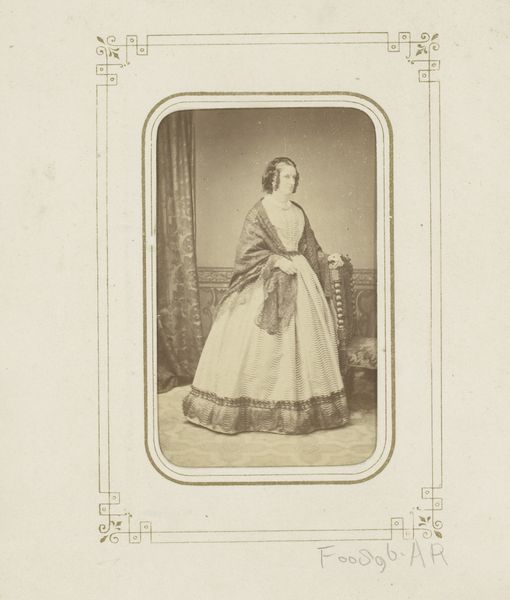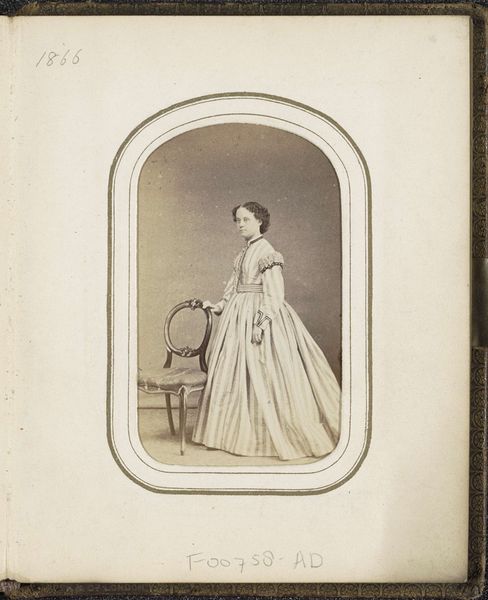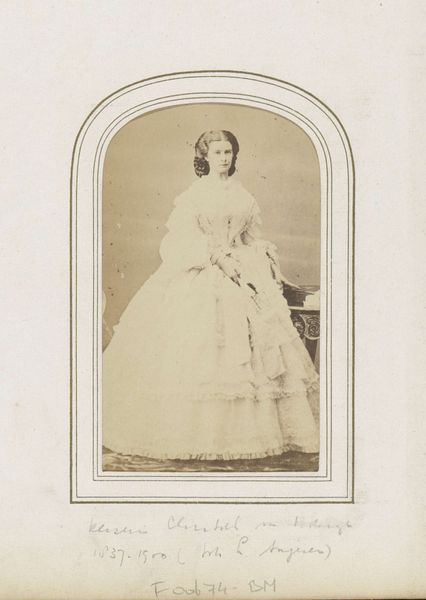
photography, gelatin-silver-print
#
portrait
#
photography
#
historical fashion
#
gelatin-silver-print
#
19th century
Dimensions: height 86 mm, width 51 mm
Copyright: Rijks Museum: Open Domain
Curator: This captivating piece is entitled "Portret van een vrouw bij een tafel, aangeduid als E.K.", dating back to 1865. It is a gelatin-silver print. Editor: The oval framing immediately lends it a classic, almost romantic feel. And that dress! The soft focus enhances the feeling of wistful remembrance. Curator: Absolutely. The material tells a story. Gelatin-silver prints were relatively new then, offering greater detail and tonal range than earlier photographic processes. Consider the societal implications: photography was becoming more accessible, and portraiture shifted from painting to capture more people, like "E.K." Editor: The composition is very deliberate: notice the framing around her torso emphasizes the figure, almost like a Renaissance Madonna, drawing the viewer’s eye vertically up to her face. What do you make of her facial expression? Curator: It’s fascinating. I see both formality, and, with that ever-so-slight softening around the eyes, a hint of melancholy. You can almost imagine this was commissioned, not just documentation, and possibly intended to show not just appearance but status. Editor: True, but even within those societal constraints, she maintains an individuality. The texture and volume of the skirt – those massive hoops! – speak volumes. And what is it with that object next to the sitter's elbow? It does add an important counterpoint to the overall vertical composition. Curator: Her proximity to it perhaps implies it contains valuable goods and wares? She oversees its creation or distribution. Remember that 1865 occurred soon after the abolition of slavery in America. It's an insight into the shift in capitalist power structures during the period. Editor: Fascinating points, indeed. It really prompts one to look more closely at the artistry of its time. Curator: It invites contemplation about the social fabric within which portraits like these were woven and created, highlighting who was photographed and how photography transformed class power. Editor: An engagement with art as an encounter with its moment in visual history.
Comments
No comments
Be the first to comment and join the conversation on the ultimate creative platform.
